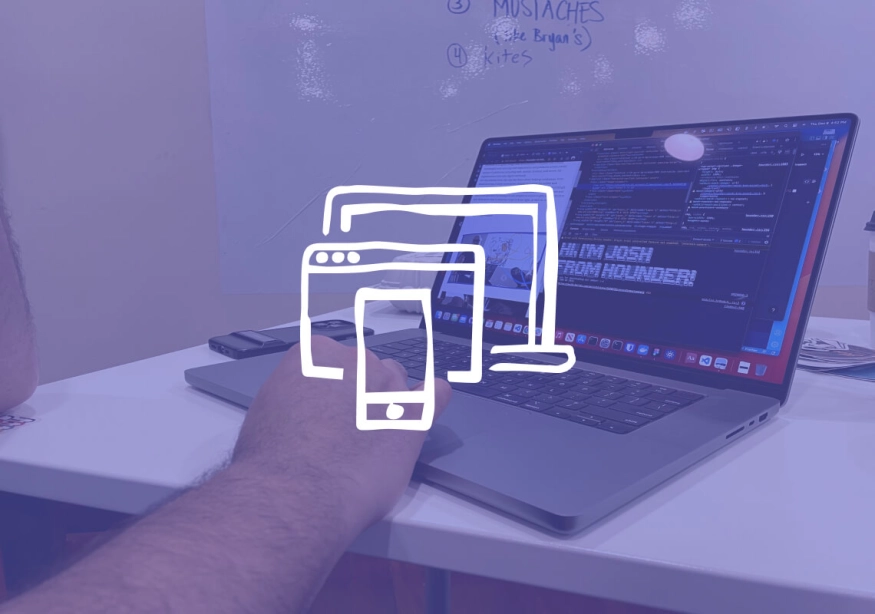Headless design systems have emerged as a powerful tool for developers and designers alike. This innovative approach to building design systems offers a host of benefits and allows for greater flexibility and scalability. Understanding the ins and outs of headless design systems is key to unlocking their full potential.
Understanding Headless Design Systems
Before delving into the specifics of headless design systems, it's important to define what exactly they are. Headless design systems can be thought of as a modular approach to design where the front-end presentation layer is decoupled from the back-end logic and data. This separation enables greater flexibility in terms of design iterations and implementation.
The evolution of design systems has paved the way for headless design systems. Traditional design systems often relied on tightly coupled front-end frameworks, limiting their adaptability and scalability. Headless design systems, however, break free from these constraints, allowing for more agile and efficient development processes.
One key advantage of headless design systems is the ability to future-proof your digital experiences. By separating the front-end and back-end components, organizations can easily adapt to new technologies and trends without having to overhaul their entire system. This flexibility is crucial in today's fast-paced digital landscape, where innovation and adaptability are key to staying ahead of the competition.
Furthermore, headless design systems promote reusability and consistency across different platforms and devices. Design elements and components can be shared and reused across multiple projects, ensuring a cohesive brand experience for users. This not only saves time and resources but also helps maintain a unified brand identity in an increasingly fragmented digital world.
The Power of Simplicity
The benefits of using headless design systems are manifold. Firstly, they enable designers to focus solely on the design aspect, without having to worry about the intricacies of the back-end implementation. This separation of concerns allows for more efficient collaboration between designers and developers, fostering a smoother workflow.
From a developer's perspective, headless design systems empower them to create reusable, modular components that can be used across multiple projects. This reusability not only saves time and effort but also ensures consistency in design and functionality. With headless design systems, developers can easily switch out underlying technologies without impacting the overall design and user experience.
Moreover, headless design systems promote scalability and flexibility in web development. By decoupling the front-end presentation layer from the back-end content management system, organizations can easily scale their websites and applications without being constrained by monolithic architectures. This flexibility allows for quicker iterations and updates, ultimately leading to a more dynamic and responsive digital presence.
Another advantage of headless design systems is their ability to future-proof digital products. By abstracting the presentation layer from the content management system, businesses can adapt to emerging technologies and trends more easily. This forward compatibility ensures that websites and applications built on headless design systems remain relevant and competitive in a rapidly evolving digital landscape.
Crucial Steps for Successful Implementation
Implementing a headless design system involves several key components. Firstly, there is the design library, which serves as a centralized repository for design assets such as typography styles, color palettes, and UI components. This library acts as a single source of truth for designers, ensuring consistency across all design iterations.
Another crucial component is the API layer, which acts as the bridge between the design library and the front-end application. This layer allows developers to fetch and consume design assets from the design library, further enhancing the modularity and scalability of the system.
To implement a headless design system, organizations can follow a step-by-step process. This may involve conducting a thorough audit of existing design assets, establishing design guidelines and principles, as well as developing a comprehensive documentation and training program. By following these steps, organizations can lay a solid foundation for their headless design system.
Furthermore, when implementing a headless design system, it is essential to consider the role of version control. Version control allows teams to track changes made to design assets over time, providing a clear history of modifications and enabling easy rollbacks if needed. This ensures that design consistency is maintained and that any updates can be managed effectively.
Additionally, incorporating a component-based architecture is beneficial when implementing a headless design system. By breaking down the UI into reusable components, developers can create a more flexible and efficient design system. This approach not only streamlines the development process but also promotes consistency and reusability across different projects.
Overcoming Challenges and Kicking Butt With Your New System
While headless design systems offer many advantages, they do come with their own set of challenges. One common obstacle is the initial learning curve associated with adopting a new approach to design. Designers and developers may need to familiarize themselves with the underlying technologies and processes involved.
However, there are solutions available to address these challenges. Organizations can provide training and resources to help their teams get up to speed with headless design systems. Additionally, fostering a culture of experimentation and continuous learning can encourage creativity and innovation within the design and development teams.
Another challenge that organizations may face when implementing headless design systems is the need to ensure seamless integration with existing tools and platforms. This can require significant time and effort to properly configure and optimize the system to work efficiently within the current infrastructure.
One way to overcome this challenge is to conduct thorough research and planning before implementation. By carefully assessing the organization's existing tools and processes, teams can identify potential integration points and develop a strategy to streamline the transition to a headless design system.
Future Trends in Headless Design Systems
As technology continues to advance, headless design systems are poised to play an even greater role in shaping the future of digital design. Predictions point towards increased adoption of headless design systems in various industries, as organizations recognize the benefits of decoupling the front-end from the back-end.
In the realm of future tech, headless design systems are expected to integrate seamlessly with emerging technologies such as virtual reality, augmented reality, and voice interfaces. This integration will further enhance the user experience and open up new possibilities for interactive and immersive designs.
In conclusion, unlocking the power of headless design systems requires a deep understanding of their components and implementation processes. By embracing this modular approach to design, organizations can unleash the full potential of their design and development teams, leading to more efficient workflows, improved collaboration, and ultimately, superior user experiences.



